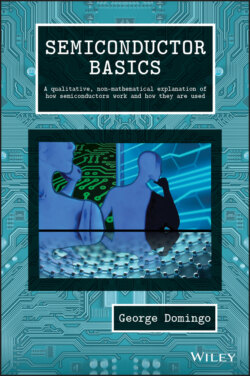Читать книгу Semiconductor Basics - George Domingo - Страница 15
1.3 The Strange Behavior of Spectra from Gases and Metals
ОглавлениеThe next step was to take a look at the emission of light from several metals, gases, and stars. The observers soon found that each element has its own unique set of lines. Take a look at Figure 1.4. White light through a prism generates a continuous spectrum (top diagram); no colors are missing. If we heat a gas until it glows and pass the light through the same prism (middle diagram), only certain lines are projected onto the screen: the rest of the spectrum has disappeared. But if we do it differently – that is, if we have the cold gas between the white light and the prism (bottom diagram) – then the full spectrum appears, except for exactly the same lines that were visible in the previous spectral measurement. The superposition of the middle and lower spectra is equal to the spectrum of the white light at the top. The gas, when cold, absorbs the same specific light waves as the ones it emits when it glows. What a coincidence! And this happens with all gases and materials. The lines are at different frequencies, but all of them have lines.
Figure 1.4 The spectrum from any gas shows similar but different missing lines (middle image), but when the same gas is hot and emits light, only the lines that were black before are now visible (lower image).
Source: https://quizlet.com/102018176/astronomy‐4‐spectroscopy‐flash‐cards/.
